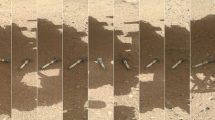 Newtec, Telesat, and the University of Surrey have conducted tests confirming that LEO satellites will provide backhaul transport, including for future 5G networks.
Newtec, Telesat, and the University of Surrey have conducted tests confirming that LEO satellites will provide backhaul transport, including for future 5G networks.
The live test connected the University of Surrey’s 5G Test bed network within its 5G Innovation Centre to Telesat’s Phase 1 LEO satellite.
Video chat sessions, simultaneous 8K streaming and Internet browsing were tested within stringent Quality of Service (QoS) and slicing parameters. A 4K video was also transferred to the edge of the 5G network representing a future 5G use case.
From the technologies tested, Newtec modems demonstrated the ability to deliver 8K videos with superior Quality of Experience (QoE). This paves the way for increasingly bandwidth applications over 5G for the maritime, aero, connected car and broadband markets.
Commenting on the opportunities rendered by the test, De Loor, VP Market Development at Newtec, said: “The seamless and very high-performance connectivity provided by Newtec technology validates the use cases for many new 5G applications in the strategic market verticals where Newtec is positioned. The work carried out is a guideline for future multi-orbit deployments and highlights the benefits of the unique combination of LEO constellations and 5G.”
Commenting on the partnership, Michel Forest, Director of Engineering at Telesat, said: “Telesat is pleased to be collaborating with innovative companies such as Newtec that recognize the potential of Telesat’s LEO system to enable demanding low-latency 5G applications such as 4K video streaming. This demonstration confirms that Telesat’s state-of-the-art LEO architecture delivers on the promise of latency-sensitive and high bit rate applications such as in 5G connectivity.”












Add Comment